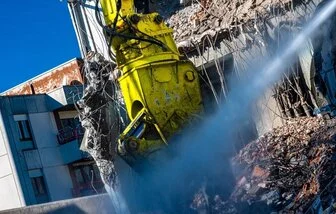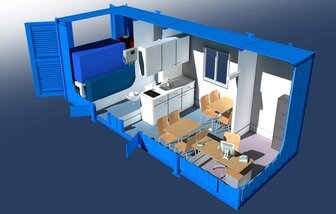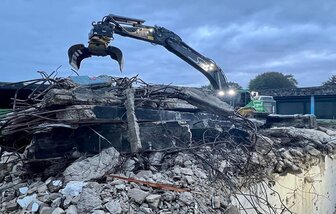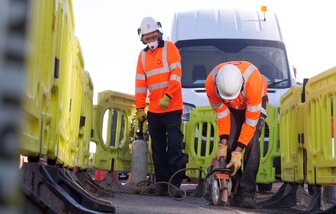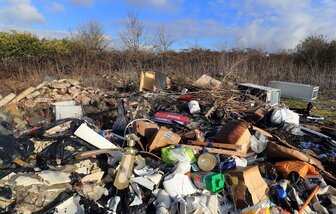Demolition Plant & Storage
What are demolition excavators? Demolition excavators are powerful machines that require proper training, maintenance, and storage to ensure safe operation and compliance with HSE regulations in the UK. By following the guidelines outlined by the HSE, operators and employers can minimize risks, prevent accidents, and create a safe working environment.
Demolition Plant & Storage in Demolition
Learn about the safe use and storage of demolition excavators in the construction industry. Follow the guidelines provided by the Health and Safety Executive (HSE) in the United Kingdom to ensure compliance with regulations and prevent accidents.
Proper training, maintenance, and storage techniques are essential for the safe operation of these powerful machines. Familiarise yourself with the HSE regulations, such as PUWER, LOLER, and CDM, to protect workers and avoid legal liabilities. Create a safe working environment by adhering to the HSE guidelines for demolition excavators.
Demolition plant is essential in the construction industry, as they ensure the safe and efficient removal of structures. By following strict guidelines and regulations, these plants prioritise safety, efficiency, and sustainability.
Understanding the process and importance of demolition plant can help stakeholders in the construction industry make informed decisions and ensure successful project execution.
A demolition plant, also known as a demolition site or a wrecking yard, is a designated area where structures are dismantled, demolished, and removed.
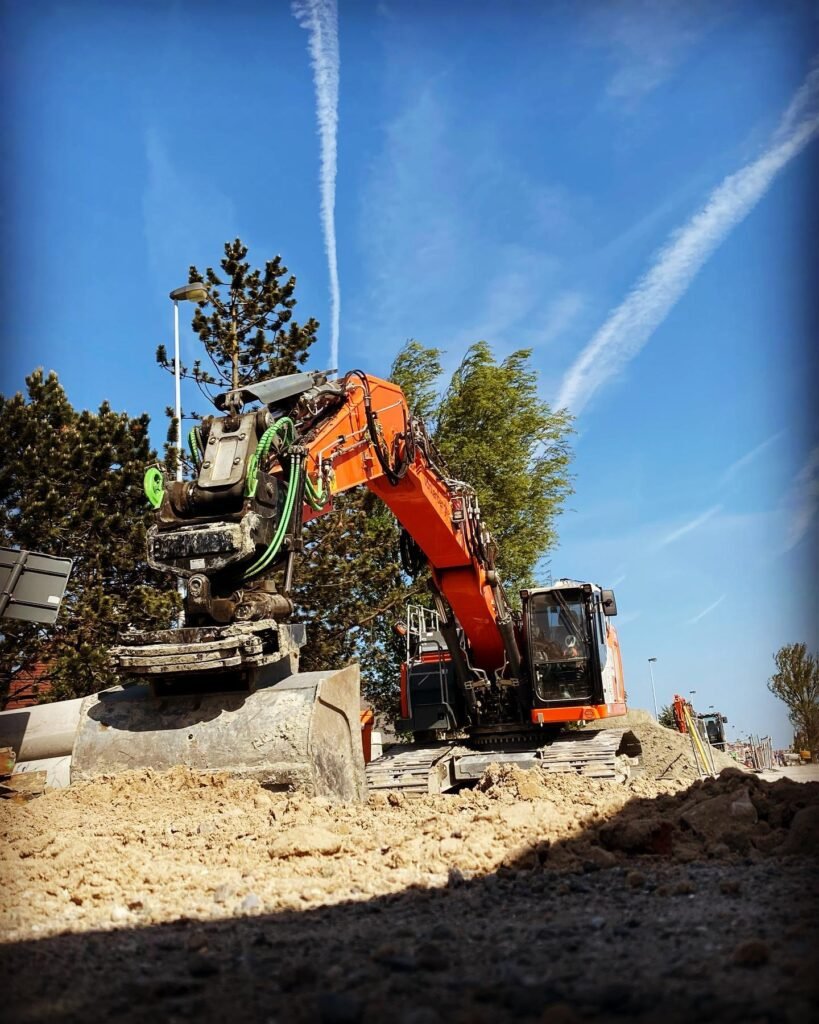
Demolition plants play a vital role in the construction industry for several reasons:
- Safety: Demolition plants prioritize safety by following strict protocols and regulations. This ensures the safety of workers, nearby structures, and the environment.
- Efficiency: With their specialized equipment and skilled personnel, demolition plants can efficiently dismantle structures, saving time and resources.
- Sustainability: Demolition plants promote sustainability by recycling and reusing materials whenever possible. This reduces waste and minimizes the environmental impact of demolition.
- Site Preparation: Demolition plants prepare the site for new construction or development, clearing the way for the next phase of the project.
The process of demolition involves several steps, each carefully executed to ensure a safe and efficient removal of the structure. Here are the key steps involved in the demolition process:
- Site Preparation: Before the demolition can begin, the site is prepared by removing any hazardous materials, such as asbestos or lead, and securing the area to prevent any accidents or unauthorized access.
- Structural Analysis: A thorough analysis of the structure is conducted to determine the best method of demolition. Factors such as the type of structure, its location, and any surrounding structures are taken into consideration.
- Equipment Setup: Once the analysis is complete, the necessary equipment is brought in and set up at the site. This includes heavy machinery, safety barriers, and any additional tools required for the demolition.
- Demolition Execution: The actual demolition begins with the removal of non-structural components, such as windows, doors, and fixtures. Then, the structural elements are carefully dismantled or demolished using the appropriate machinery and techniques.
- Debris Removal: After the structure is demolished, the debris is collected and removed from the site. This may involve sorting and recycling materials, such as concrete or metal, to minimize waste and promote sustainability.
- Site Cleanup: Once the debris is removed, the site is thoroughly cleaned and prepared for the next phase of construction or development.
When operating a demolition excavator, it is essential to follow the HSE guidelines to minimize risks and maintain a safe working environment. Here are some key considerations:
- Training: Operators must receive proper training and hold the necessary certifications to operate demolition excavators. Adequate knowledge of the machine’s controls, safety features, and operational procedures is crucial.
- Inspections: Regular inspections of the equipment should be conducted to identify any faults or defects. This includes checking the hydraulics, brakes, tracks, and other essential components. Any issues should be promptly addressed and repaired.
- Pre-Start Checks: Before starting the machine, operators should perform pre-start checks to ensure everything is in working order. This includes checking fluid levels, inspecting the tracks, and testing the emergency stop buttons.
- Safe Operating Procedures: Operators should adhere to safe operating procedures, such as maintaining a safe distance from other workers, avoiding excessive loads, and using appropriate safety equipment, including seat belts and protective gear.
- Communication: Clear communication between the operator and other workers on-site is crucial. Hand signals, radios, or other communication devices should be used to ensure everyone is aware of the excavator’s movements and actions.
Proper storage of demolition excavators at the end of the day is essential to prevent unauthorized use, vandalism, and theft. Additionally, it ensures the longevity of the equipment. Here are some guidelines for storing demolition excavators:
- Clean the Machine: Before storing the excavator, it is important to clean it thoroughly. Remove any debris, mud, or other substances that may have accumulated during the day. This helps prevent corrosion and damage to the machine’s components.
- Park in a Secure Area: Find a secure area on-site or within a designated storage facility to park the excavator. Ideally, this area should be fenced, well-lit, and equipped with security cameras to deter theft and vandalism.
- Secure the Machine: Use proper locking mechanisms, such as immobilizers or wheel locks, to secure the excavator. This prevents unauthorized use and reduces the risk of theft.
- Store Attachments Separately: If possible, store the excavator’s attachments separately. This reduces the risk of damage and makes it more difficult for thieves to steal the entire machine.
- Perform Maintenance: Take the time to perform routine maintenance tasks, such as checking fluid levels, inspecting the tracks, and lubricating moving parts. This helps keep the machine in good working condition and reduces the risk of breakdowns.
The Health and Safety Executive (HSE) in the United Kingdom has established regulations to ensure the safe use and storage of demolition excavators. These regulations aim to protect workers and minimize the risk of accidents. It is crucial for employers and operators to familiarize themselves with these regulations and comply with them at all times.
Some key HSE regulations related to demolition excavators include:
- The Provision and Use of Work Equipment Regulations 1998 (PUWER)
- The Lifting Operations and Lifting Equipment Regulations 1998 (LOLER)
- The Construction (Design and Management) Regulations 2015 (CDM)
Compliance with these regulations not only ensures the safety of workers but also protects employers from legal liabilities and penalties.
What is demolition?
The process involves Rotational hydraulic shears and rock-beakers attached to specialist excavators are also used to cut or break through wood, cut steel and crush concrete which reduces the structure to a rubble
Securing your demolition project
Implementing robust security measures, such as perimeter fencing, access control, signage, surveillance systems, and proper lighting, can significantly reduce the
Demolition hazards
If a demolition project is well planned the risks of injury and death can be minimised. It should be emphasised that the planning and execution of a demolition project should only be done by appropriately competent persons.
Notification of intended demolition Section 80
If your considering demolishing an existing building you will need to submit a demolition, Section 80 Notice together with your (RAMS) to your local authority according to section 80
Welfare facilities
Welfare facilities are an essential component of any demolition project. By providing suitable facilities, employers prioritize the well-being and safety of their workers, leading to increased
Demolition plant
Demolition plant is essential in the construction industry, as they ensure the safe and efficient removal of structures. By following strict guidelines and regulations, these plants prioritise safety, efficiency, and sustainability.
Utilities disconnection
Terminating utilities at the boundary is a critical step in the demolition process. It ensures the safety of the demolition crew and the surrounding environment, helps comply with regulations, prevents damage to utilities
Internal soft strip
Soft strip demolition is a crucial process that involves the removal of the internal structure of a building, making it ready for demolition or refurbishment. This process includes the careful removal of various materials.
Planning your demolition project
Learn how to create an effective demolition plan for your construction project. This comprehensive guide covers the key steps, including site assessment, hazard identification, safety measures, waste management, and more.
Managing asbestos
Learn about the dangers of asbestos, its different types, and where it can be found. Understand the health risks associated with asbestos exposure and the importance of proper testing and safe removal. Protect yourself and others from the harmful effects of asbestos.
Dealing with waste
Learn about waste management practices in demolition projects and the legal requirements that must be followed. Understand the types of demolition waste, effective waste management practices, and the laws and regulations governing waste management
Hazardous waste liquids
Hazardous liquids in demolition projects. Understand the importance of identifying, segregating, and properly disposing of hazardous waste. Follow the guidelines the safe handling, storage, and disposal of hazardous
Ready to start your project ?
Let's Work Together
Please complete the form below and someone from the Total team will be in touch.

